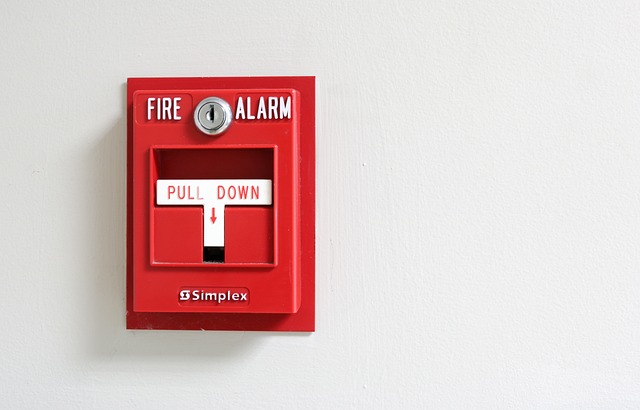What is a Fire Safety Plan?
A fire safety plan is a document that outlines all aspects of fire prevention procedures, evacuation procedures, and policies for responding to a fire. It includes emergency plans and emergency response procedures that must be followed in case of a fire.
A fire safety plan provides guidance to ensure that everyone in the workplace knows what to do to minimize the damage caused by a fire. It’s an important document that’s required for any building, providing important information about how to deal with a fire.
 Does your business have a fire safety plan in place?
Does your business have a fire safety plan in place?
Equip Yourself for Emergency Preparedness Today
Secure Your FREE Guide to Mastering Fire Extinguisher Use.
The Importance of Creating a Fire Safety Plan
Fire safety plans are important for a variety of reasons:
Protecting People
Having a proper fire safety plan in place ensures that your employees, clients, and visitors are safe in the event of a fire. It provides a detailed procedure of what to do when a fire breaks out, and what steps to take to keep everyone safe.
Protecting Property
Fires can cause significant damage to property, especially in commercial properties. Having a fire safety plan in place can minimize property damage by providing a strategy to contain or extinguish fires before they grow.
Complying with Legal Regulations
As mentioned earlier, all workplaces are required to have a fire safety plan. Complying with legal regulations avoids potential litigation in the case of an incident.
Maintaining Business Continuity
A fire safety plan can also ensure that your business can continue to operate with minimal disruptions in the event of a fire. A comprehensive plan ensures that employees understand their roles and responsibilities, which helps to protect business continuity.
How to Create a Fire Safety Plan
Creating a fire safety plan is a collaborative effort that requires EHS teams to work closely with other employees. Here are the steps that companies should take to create a fire safety plan:
Conduct a Fire Risk Assessment
The first step in developing a fire safety plan is to conduct a thorough fire risk assessment. This involves identifying potential fire hazards, such as electrical equipment, flammable liquids, and heating and cooking appliances.
Evaluate the potential consequences of a fire and identify the people who are at risk if there is a fire. This assessment will help you determine what fire safety measures are needed to reduce the risk of fire in your workplace.
Plan for Emergencies
In the event of a fire, you want to ensure that everyone in the building can evacuate safely and quickly. A fire evacuation plan should be created that outlines the escape routes, emergency procedures, and designated assembly areas outside the building.
Make sure to perform fire drills on a regular basis, so that everyone can practice evacuating the building quickly and safely.
Along with this, assign roles to specific individuals in case of an emergency. Assign someone to take attendance after an evacuation or as a liaison between fire officials and employees.
Install Fire Detection and Suppression Equipment
Smoke alarms, fire extinguishers, sprinklers systems are essential fire safety tools that can make a big difference in reducing the risk of fire and the damage that fire can cause.
Evaluate your workplace and decide what kind of fire suppression tools are necessary in each location. Make sure that the equipment is installed correctly and regularly maintained to ensure they function properly.
Train Employees on Fire Safety
It's important to educate and train employees on fire safety awareness and fire prevention best practices. Train your employees on what to do in case of a fire, which includes showing them ways to recognize and report potential fire hazards.
Display posters and signs throughout the building that demonstrate what to do in case of an emergency and basic fire safety tips, so they are easily accessible.
Providing fire safety training to employees can lower the chance of incident and builds a foundation of safety culture.
Review Your Fire Safety Plan Regularly
A fire safety plan is not a one-time event, instead, it's a continual process. Reviewing the plan regularly and updating it when necessary is essential.
Make sure to update the plan if new hazards are identified or if changes take place to the building that may impact the fire safety measures.
Keep up-to-date records of the fire drills and inspections conducted, along with any changes or upgrades made to the building. Doing so can help you continually improve our fire safety measures and regulations.
Equip Yourself for Emergency Preparedness Today
Secure Your FREE Guide to Mastering Fire Extinguisher Use.
Use EcoOnline to Create and Manage Fire Safety Plans
EcoOnline is a workplace incident reporting safety tool that allows organisations to create fire safety plans, conduct risk assessments, and more. It can be used for creating a centralized fire safety plan, for seeking input from other employees, and for making sure that all employees are aware of what steps to take in case of a fire outbreak.
It has multiple modules that companies can leverage, helping them improve reporting and ensuring better workflows.
